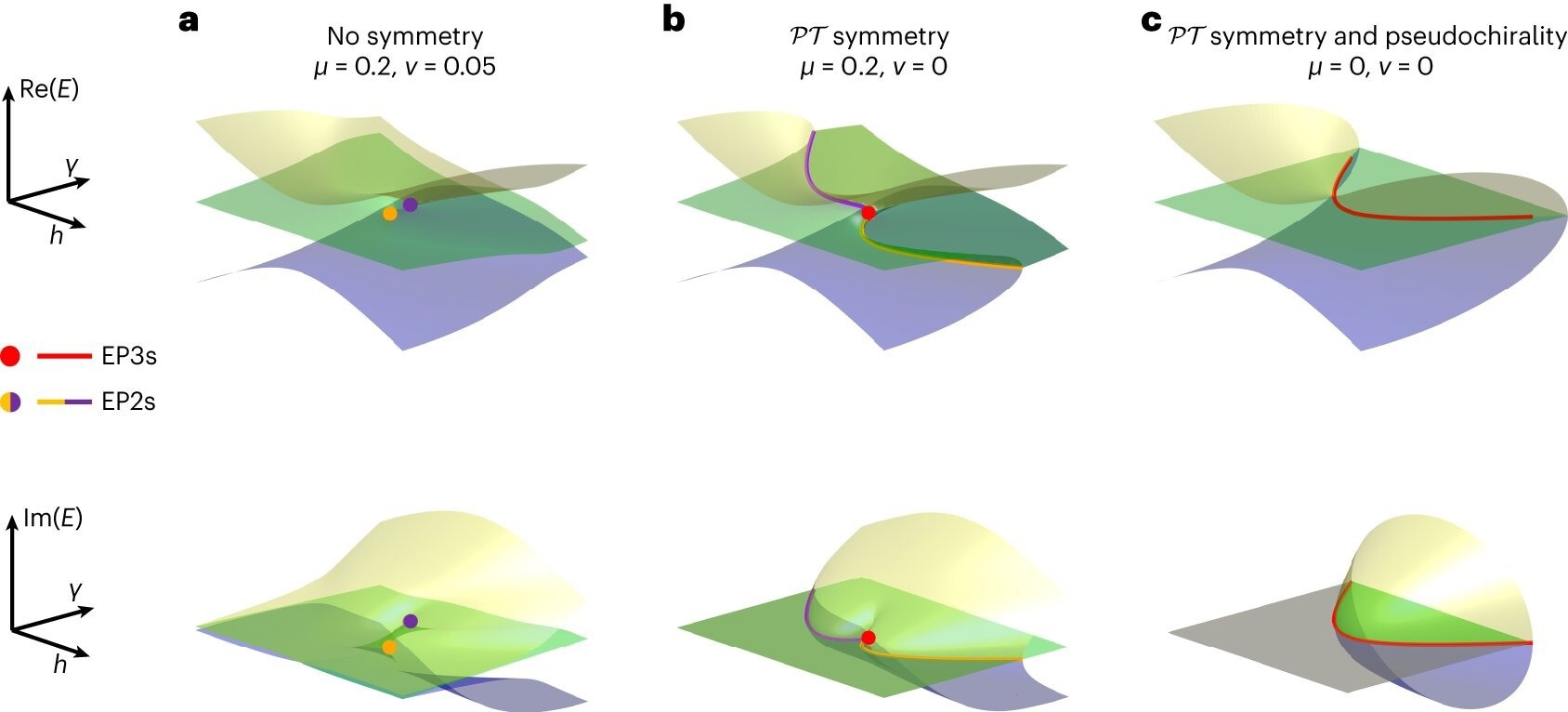Researchers have detected the third-order exceptional line (EL) in a nitrogen-vacancy (NV) spin system and have methodically investigated the relationships between symmetries and high-order non-Hermitian exceptional points (EPs). The study has been published in the journal Nature Nanotechnology.
 The third-order exceptional point structures of H(μ,ν)(γ,h) with different symmetries. Image Credit: Nature Nanotechnology (2024). DOI: 10.1038/s41565-023-01583-0
The third-order exceptional point structures of H(μ,ν)(γ,h) with different symmetries. Image Credit: Nature Nanotechnology (2024). DOI: 10.1038/s41565-023-01583-0
When two or more eigenvalues and eigenstates combine in non-Hermitian systems, EPs are singularities. The special properties of EPs give rise to a variety of unusual topological events and innovative, dynamic aspects. The comprehension of frontier fields such as quantum computing and topological phase transitions has been significantly enhanced by EPs.
Compared to second-order EPs, high-order EPs show richer topological features and superior sensing capability. However, because high-order EP realization necessitates the simultaneous tuning of several system characteristics, it can be tricky to achieve. The higher the order of the EPs, the more system parameters that must be concurrently tuned.
The research teams, under the direction of Academician Du Jiangfeng and Prof. Rong Xing from the University of Science and Technology of China (USTC)'s CAS Key Laboratory of Microscale Magnetic Resonance, used the nuclear spin system, an atomic-scale diamond defect, and a single NV center to realize non-Hermitian systems that embrace both pseudochirality and PT symmetry. Additionally, a report was made on the experimental observation of third-order EL in two-dimensional parameter space.
The researchers discovered that when there was only PT symmetry in the non-Hermitian Hamiltonian, third-order EPs could exist as isolated points by systemically examining the function of symmetry in high-order EP geometries.
The connection between the symmetries of the non-Hermitian Hamiltonians and the third-order EPs was further investigated by the researchers. When the non-Hermitian Hamiltonian lacked symmetry, it turned out that there was no third-order EP, demonstrating the significance of symmetries in understanding the structure of high-order EPs.
It is noteworthy that previous studies in diamonds have been beneficial for the effective observation of high-order EP geometries. A strong basis for this effort has been established by Prof. Wang Ya’s many years of dedication to the synthesis and production of high-quality diamonds.
This study is essential to the field of non-Hermitian studies. It can also investigate topological physics associated with high-order EP at the atomic scale, providing insights into quantum control and quantum-enhanced metrology.
Journal Reference:
Wu, Y., et. al. (2024). Third-order exceptional line in a nitrogen-vacancy spin system. Nature Nanotechnology. doi:10.1038/s41565-023-01583-0
Source: https://en.ustc.edu.cn/